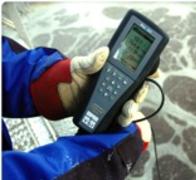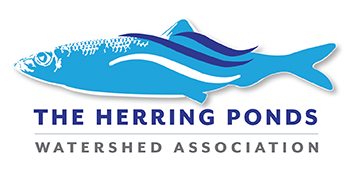
The amount of dissolved oxygen in the water can tell us a lot about the health of our ponds. Oxygen is crucial for life. The dissolved oxygen in water (DO) plays a major role in the ecology of the Herring Ponds as it provides fish and other animals with oxygen. This oxygen is produced by algae and rooted aquatic plants, which infuse the oxygen (a by product of photosynthesis) into surrounding water. Oxygen can also dissolve into water from the atmosphere, especially with agitation from wind or waterfalls.
To test the dissolved oxygen levels and temperature in the ponds we use a probe suspended from a long cable, with a control attached at the other end (see the picture to the right). The level of DO indicates the health of the pond. Low DO means poor pond health and vice versa. In testing the DO of the pond, The Herring Ponds Watershed Association (HPWA) takes readings from the top to bottom of the pond in increments in order to ensure there is oxygen in the deepest parts of the pond. Without proper distribution of oxygen at each level of the pond plants and other living things who call the bottom of the pond home would not be able to survive.
